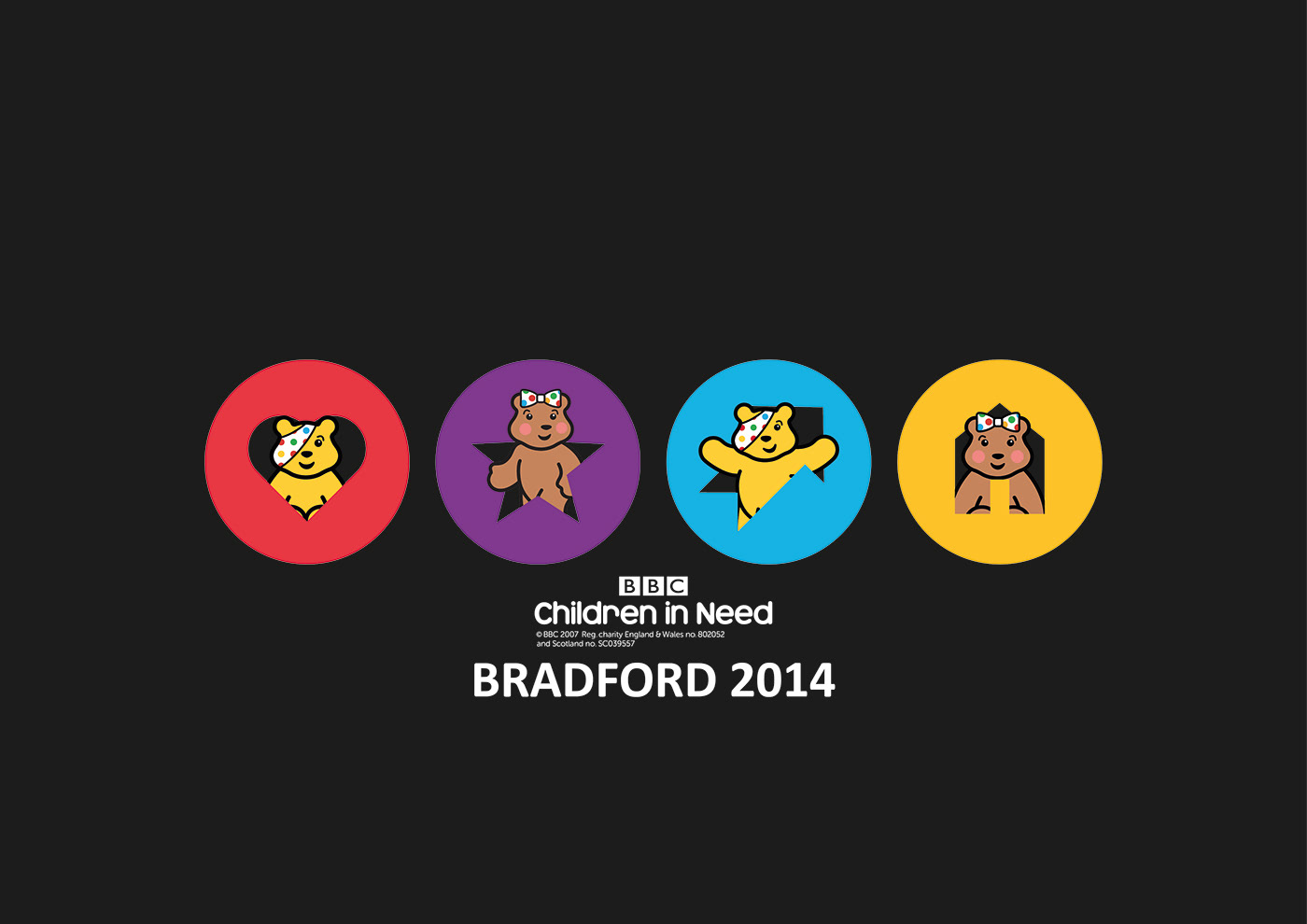
Set design is of concepts and ideas coming together to create a stage which meets the requirement of its purpose of use. In the case of BBC Children in Need, we were talked through the brief at the set where our art work was to be displayed to give us a visual of what is actually required at what scale it is required.
“A designer looks at the details searching for evidence through research to produce conceptual ideas that’s best toward supporting the content and values with visual elements. The subject of, “How do we generate creative ideas?” is a very legitimate question. The most consuming part of expanding our horizons toward scenic concepts is much more than witnessing creativity, and creative people. It starts with us opening our mind to the possibilities. To have an attitude toward learning, seeking, and engaging in creativity and to be willing to be adventurous, inquisitive and curious. Our imagination is highly visual. Whether outside or inside, colourful trees or concerts, star lit skies or the architecture of a great building, scenic design is a process of discovery.
Discovering what will best clarify and support the story being told.
The scenic designer works with the director and other designers to establish an overall visual concept for the production and design the stage environment. They are responsible for developing a complete set of design drawings that include the following:
basic ground plan showing all stationary scenic elements;
composite ground plan showing all moving scenic elements, indicating both their onstage and storage positions;
section of the stage space incorporating all elements;
front elevations of every scenic element, and additional elevations or sections of units as required.
composite ground plan showing all moving scenic elements, indicating both their onstage and storage positions;
section of the stage space incorporating all elements;
front elevations of every scenic element, and additional elevations or sections of units as required.
All of these required drawing elements can be easily created from one accurate 3-D CAD model of the set design.
The scenic designer is responsible for collaborating with the theatre director and other members of the production design team to create an environment for the production and then communicating the details of this environment to the technical director, production manager, charge scenic artist and prop-master. Scenic designers are responsible for creating scale models of the scenery, renderings, paint elevations and scale construction drawings as part of their communication with other production staff.”
http://en.wikipedia.org/wiki/Scenic_design








